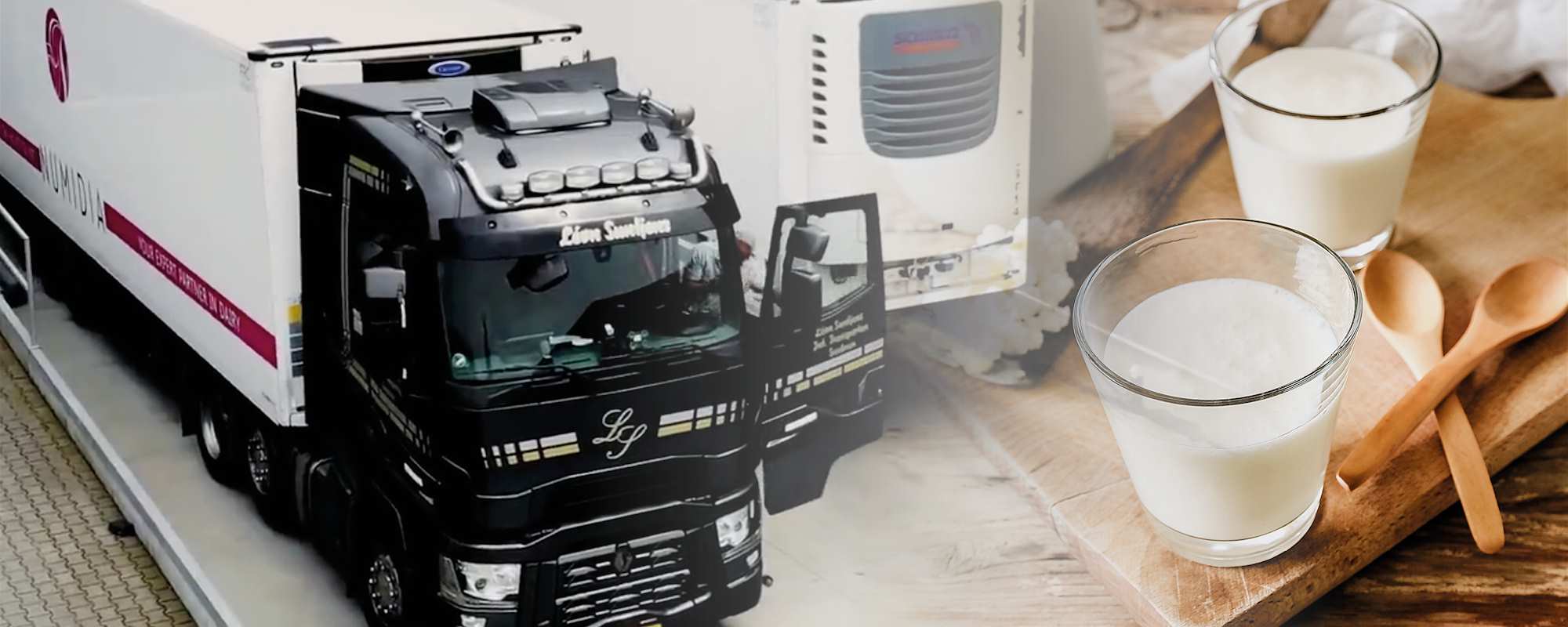Environmental

Numidia has a strong focus on reducing any adverse impacts on the environment caused by its processes, or those of its partners. Our environmental management system is certified to ISO 14001:2015, which demonstrates our commitment to measuring and continuously reducing our environmental impact. Since 2020, we have also met the CO2 Reduction Management standard, an addition to the ISO 14001 standard, without non-conformities.
Environmental policy
We want the best for our employees, customers, suppliers and their communities; today and in the future. We are committed to reducing our environmental impact, including our direct impacts and indirect impacts related to transport and warehousing.

We consider it our responsibility to contribute to CO2 reduction and compensation. We are proud to be the first global dairy trader to become CO2 neutral in its operations. In addition, we pride ourselves in continuously improving our environmental performance by setting objectives and targets in compliance with environmental management systems and EU legislation. With specific focus on the major emission sources such as the transportation of goods. Our environmental policy is communicated to all staff members and is available to contractors, suppliers and the public.
Climate change
Addressing climate change is a top priority on Numidia’s agenda, reflecting both our internal commitment and external stakeholder expectations. We actively work to mitigate greenhouse gas (GHG) emissions, including direct emissions related to Numidia-owned or controlled property or processes, and indirect emissions linked to several of our activities within the supply chain. We also require our suppliers to take action to reduce GHG emissions by using renewable energy sources where feasible and economically viable. In addition, we expect suppliers to make a concerted effort to identify their carbon footprint using the GHG Protocol or a comparable standard.
CO2 footprint, reduction & offsetting
Numidia follows the GHG Protocol Corporate Accounting and Reporting Standard GHG Protocol to identify its carbon footprint, with a focus on carbon dioxide or carbon dioxide equivalents (CO2-eq). See chapter "Non-financial results" for an overview of Numidia’s carbon footprint.
We have assessed our scope 1, scope 2 and various scope 3 emissions. This means that we have identified CO2-eq emissions not only from company-owned office buildings, business travel and commuting, but also from the transportation of products (by ship or truck) and third-party warehousing (storage and freezing). We offset 100% of our emissions using carbon credits from the VCS or Gold Standard platforms. For all scope 1 and scope 2 emissions, our goal is to only use carbon credits from carbon offset programs that have a positive impact on the dairy supply chain.
In addition, we have calculated the upstream scope 3 emissions generated by farmers and producers of all our purchased products. However, unlike downstream scope 3 emissions from sources that fall within our area of responsibility, such as third-party transportation and warehousing, the emissions from farmers and producers are not included in Numidia’s carbon footprint.

CO2-compensated products
Numidia offers CO2-compensated products, giving customers the option to completely offset the emissions of their products from the initial collection at the farm all the way through delivery. Alternatively, we may calculate and provide customers with data on the CO2 footprint associated with their products, enabling them to choose their own carbon reduction or compensation strategy.

Sustainable head office
We have calculated our energy usage for our head office as well as all other Numidia offices around the world. Our head office was designed and constructed to be almost self-sustaining and is equipped with 110 solar panels, geothermal temperature conditioning, phase changing material ceilings (PCM) for cooling, and various other innovative and energy-saving systems. Our company car fleet now features exclusively hybrid or electric vehicles, minimizing the adverse effects of emissions.

Although waste is a relatively small part of Numidia’s environmental impact, we still make great efforts to reduce emissions from waste where possible and to separate waste for recycling purposes. This includes separating paper and PMD (plastic, metal & drink packaging) streams, but also reducing the volume of waste by, for example, replacing soda cans with water taps. By facilitating recycling, we prevent CO2 emissions from waste incineration.
Biodiversity
Numidia’s vision on biodiversity is that the preservation of the present ecosystem is critical and should be negatively impacted as little as possible. As reflected in the double materiality assessment outcome, the topic is not material, but it is emerging as it presents an increasing challenge to the dairy industry. Despite its limited impact on this aspect, Numidia ambitions to increase its impact on this topic and will look into the possibilities and opportunities. Cooperation from suppliers and farmers is crucial to make a significant impact. Preserving biodiversity needs to be a joined goal of: farmer, cooperative and Numidia. All parties will need put this topic on the corporate agenda and free up resources in order to make a difference.

